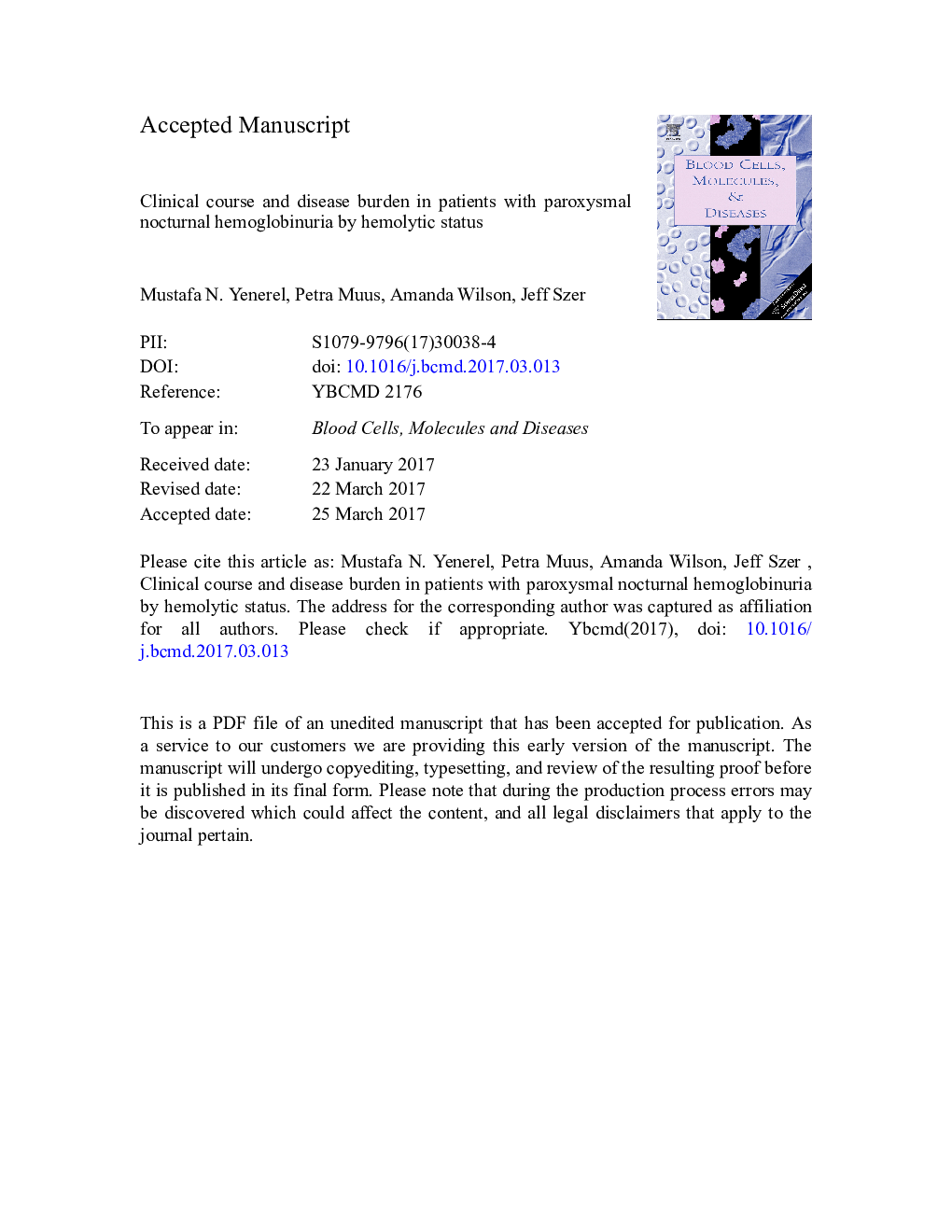| Article ID | Journal | Published Year | Pages | File Type |
|---|---|---|---|---|
| 5591449 | Blood Cells, Molecules, and Diseases | 2017 | 27 Pages |
Abstract
Disease characteristics of patients enrolled in the International PNH Registry were assessed during two follow-up periods based on hemolytic status while untreated with eculizumab: Non-hemolytic cohort: follow-up time defined as time from disease start until last reported untreated lactate dehydrogenase (LDH) value < 1.5 Ã upper limit normal (ULN); Hemolytic cohort: follow-up time defined as time from LDH â¥Â 1.5 Ã ULN at or post-disease start, to most recent untreated follow-up. A total of 1012 patients met criteria for the Non-hemolytic cohort and 1565 patients for the Hemolytic cohort; median (min, max) years of follow-up were 2.2 (0.0, 54.2) and 1.2 (0.0, 37.2) years, respectively. Annual rate of thrombotic events (TEs) was lower in the Non-hemolytic than Hemolytic cohort (0.01 events/person-year vs. 0.03 events/person-year; p < 0.001). Mortality was lower in the Non-hemolytic cohort than the Hemolytic cohort (0.1% (1 death) vs. 1.8% (22 deaths); p < 0.001). While elevated risks for TEs were observed in patients with hemolysis, many TEs were also observed in patients without hemolysis. As thrombosis is the leading cause of mortality in patients with PNH, this real-world analysis highlights the importance of awareness and monitoring for TEs in patients with PNH regardless of hemolytic status.
Related Topics
Life Sciences
Biochemistry, Genetics and Molecular Biology
Molecular Biology
Authors
Mustafa N. Yenerel, Petra Muus, Amanda Wilson, Jeff Szer,
